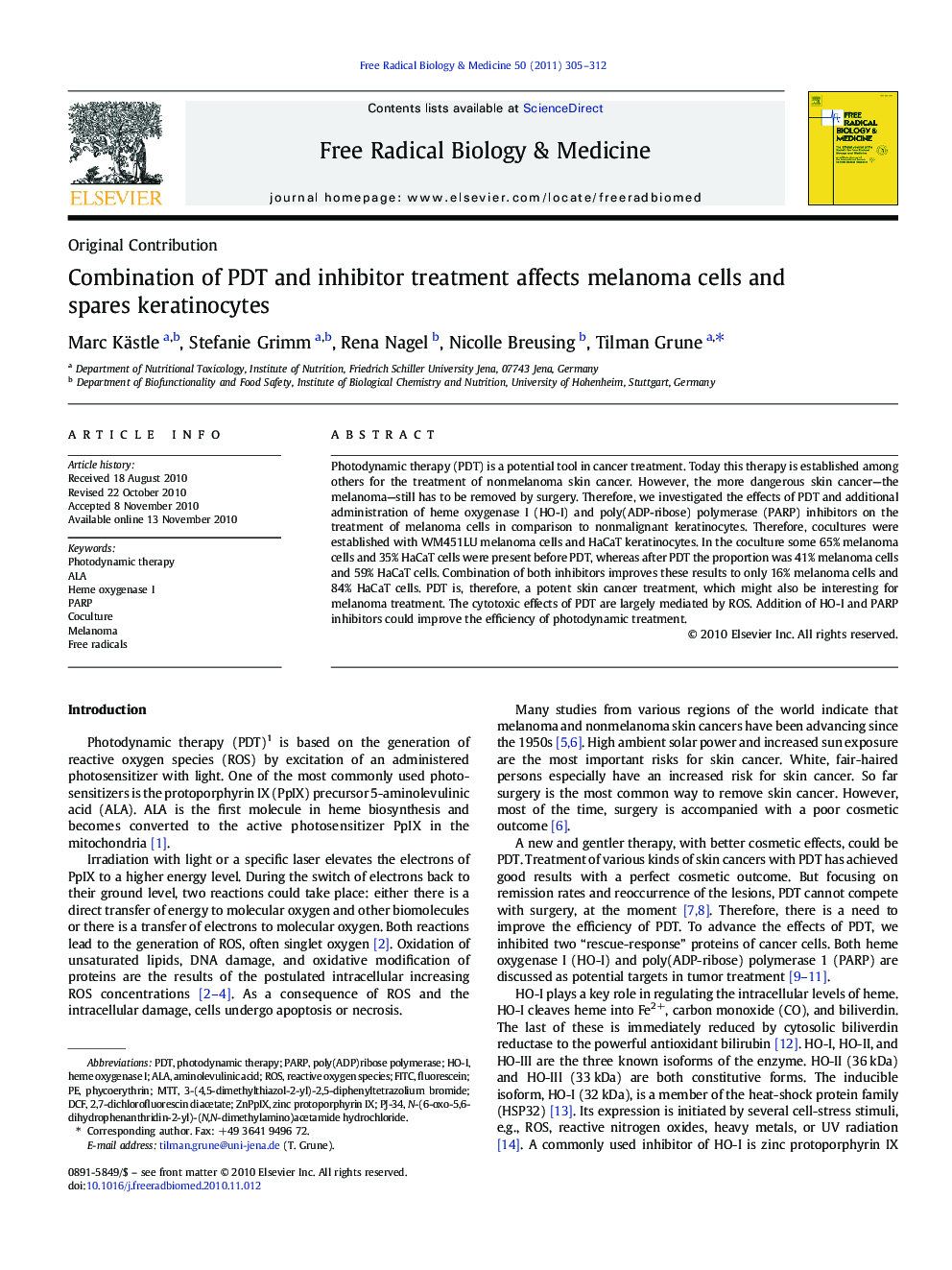| Article ID | Journal | Published Year | Pages | File Type |
|---|---|---|---|---|
| 1909619 | Free Radical Biology and Medicine | 2011 | 8 Pages |
Photodynamic therapy (PDT) is a potential tool in cancer treatment. Today this therapy is established among others for the treatment of nonmelanoma skin cancer. However, the more dangerous skin cancer—the melanoma—still has to be removed by surgery. Therefore, we investigated the effects of PDT and additional administration of heme oxygenase I (HO-I) and poly(ADP-ribose) polymerase (PARP) inhibitors on the treatment of melanoma cells in comparison to nonmalignant keratinocytes. Therefore, cocultures were established with WM451LU melanoma cells and HaCaT keratinocytes. In the coculture some 65% melanoma cells and 35% HaCaT cells were present before PDT, whereas after PDT the proportion was 41% melanoma cells and 59% HaCaT cells. Combination of both inhibitors improves these results to only 16% melanoma cells and 84% HaCaT cells. PDT is, therefore, a potent skin cancer treatment, which might also be interesting for melanoma treatment. The cytotoxic effects of PDT are largely mediated by ROS. Addition of HO-I and PARP inhibitors could improve the efficiency of photodynamic treatment.
